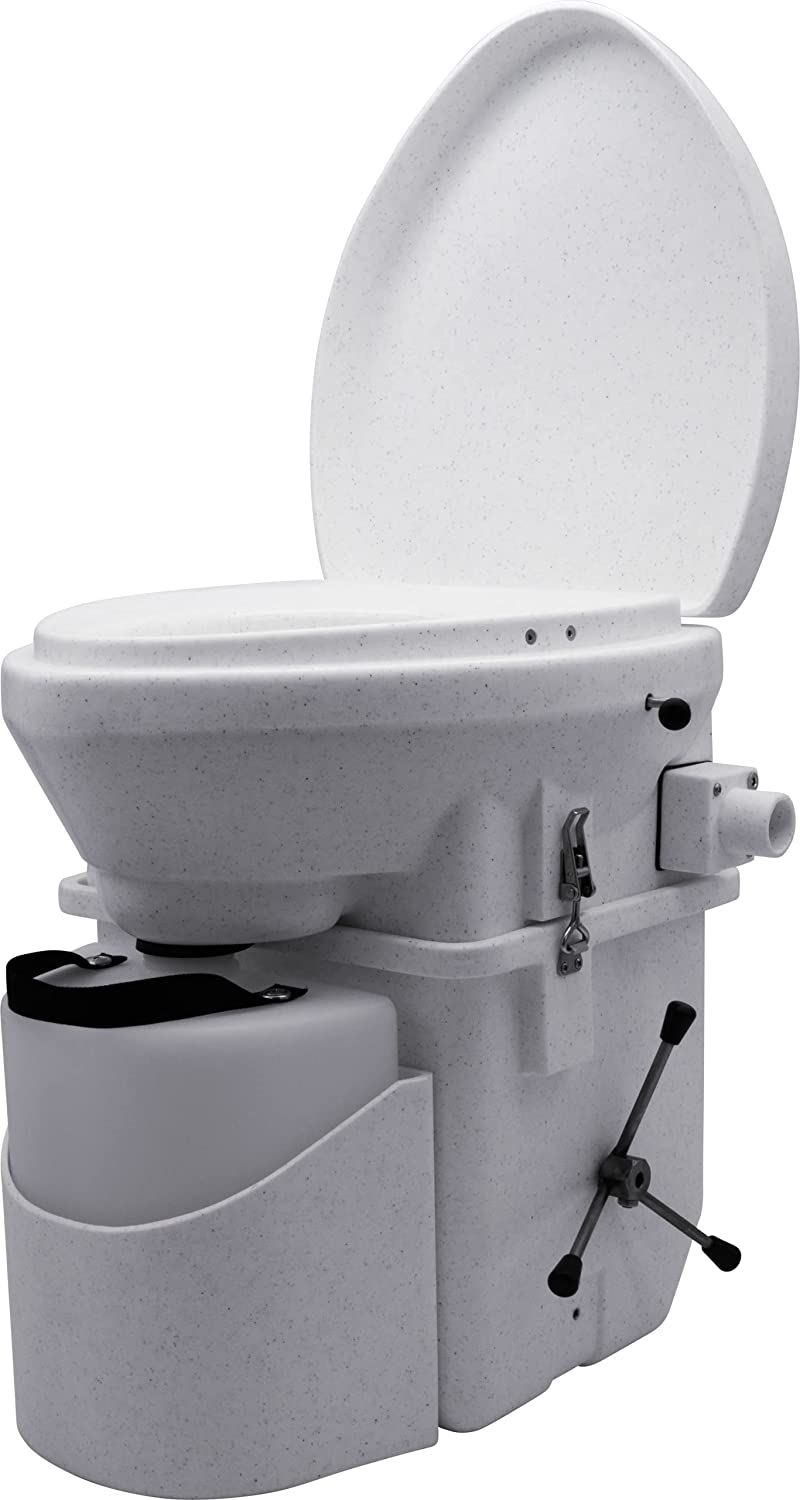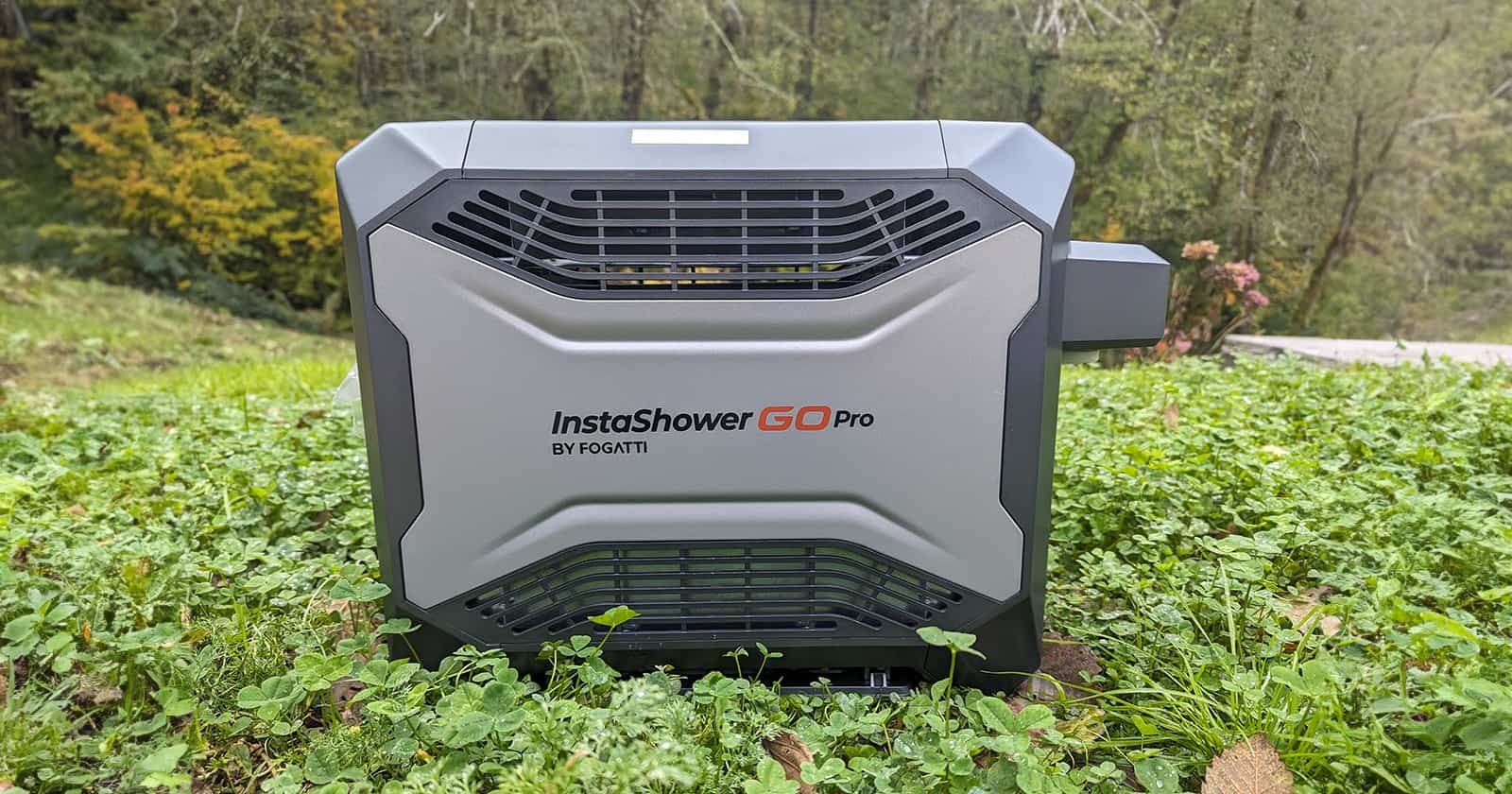A Composting Toilet Can Increase Boondocking Time
Composting toilets could be the next new trend for RVers. This is because record numbers of RVers are getting into boondocking in their RVs. But unfortunately, boondockers can only stay out camping until they are out of water. So They’re always trying to reduce water use and conserve freshwater supplies. Composting toilets are a great way to do just that. So let’s look at the best composting toilet for RVs
3 Benefits of Composting Toilets For RVs
The best composting toilet for RVs is astoundingly efficient at turning waste into safe, environmentally friendly fertilizer-just like regular compost. That’s right: They turn human waste into something that’s actually good for the environment.
Having a composting toilet in your RV has three significant benefits. Boondockers will benefit the most from switching to a composting RV toilet.
A Composting RV Toilet Uses Less Water
Composting toilets for RVs use absolutely no water. By comparison, RV flush toilets can use up to 1/3 of the RV’s fresh water supply.
No Blackwater Means Fewer Trips to The Dump
A composting toilet is completely self-contained. Waste is mixed with a composting medium like peat moss or sawdust and dried quickly. This eliminates odors while turning the waste into useful compost. By not having to hold blackwater, the black tank can be repurposed to store RV gray water instead. This can allow much longer periods between gray water dumping.
Composting RV Toilets Are Environmentally Friendly
When you flush a traditional RV toilet, waste and water get flushed and stored in the blackwater tank. When the blackwater tank becomes full, RVers dump the tank into either a septic system or directly into a city sewage system. The waste often winds up in a sewage treatment plant if attached to the city sewer system.
Treated waste often ends up in waterways, lakes, and oceans. While treated sewage is better than dumping raw sewage into waterways, it still can be a source of environmental degradation and contamination. This is a big concern for many RVers.
A composting RV toilet produces natural fertilizer that benefits the environment when disposed of properly.
What Makes The Best Composting RV toilet?
Not all composting toilets are suited for RV use. RVers looking for a good composting toilet should look for the following criteria:
- Secure installation in RV
- Ease of operation
- Relatively lightweight
- Low electrical needs
- Odorless operation
- Composting speed
- Ease of emptying the compost chamber
- Made in the USA
Top Pick: Nature’s Head Composting Toilet For RVs
The Nature’s Head composting toilet met all of our criteria. This 28 lb toilet sells for around $995, and comes with mounting brackets that allow it to be securely attached to the RV bathroom floor. It can be installed in either a dry bath or an RV wet bath.
Odorless Operation
The Nature’s Head composting toilet claims to be odorless. The key is keeping liquid waste out of the solid waste chamber. Instead, the toilet’s design diverts liquid waste into a bottle which can later be emptied under trees, into the grey tank, or at a public toilet. Nature’s Head suggests emptying the bottle under trees because it is good for them. (Check local regulations for where it is legal to dispose of human urine.)
Quick Composting
Nature’s Head Toilet composts waste relatively quickly. This toilet uses either sphagnum peat or coconut coir and oxygen to drive the composting process in a chamber under the toilet. A small fan helps to keep air flowing in the chamber so the bacteria gets the oxygen it needs. This also moves any smells out of a vent pipe.
Low Electrical Usage
The fan in the Nature’s Head Toilet uses just 1.4 Amp hours of electricity in 24 hours.
Ease of Emptying
The Nature’s Head toilet has two chambers. A bottle for liquids and a larger compartment for solid waste. Both are accessed underneath the toilet fairly easily.
Urine Bottle
The urine bottle on this toilet holds 2.2 gallons. When 2 people use the toilet, the bottle will need to be emptied every 3 or 4 days. The urine bottle sits underneath the toilet portion of the unit. You need to unclip the toilet portion and lift it 45 degrees to access it. Next, place the provided cap on the bottle. This allows no-mess removal of the bottle. It can be emptied either into a traditional toilet or (as previously mentioned) under a tree. (Always check local laws for any type of waste disposal.)
The Base
The base of the toilet holds the solid matter and/or compost. When two people use it full time, the base should be emptied every 3 or 4 weeks. Less frequent emptying is good because it takes more effort to empty than the urine bottle. To empty the base, remove the top part of the toilet. Then remove the knobs from the mounting brackets. The manufacturer suggests emptying the composted waste into a 13-gallon kitchen waste bag for disposal in a standard dumpster.
Runner Up: Air Head Composting Toilet
The Air Head Composting Toilet is probably the second most popular composting toilet for RVers. It has a design that looks a lot like a traditional toilet and the company bills itself as being the most compact composting toilet on the market. Its solid tank capacity is said to last up to 60 uses or two people for about a month with full-time use. The urine bottle is only slightly smaller than Nature’s Head at two gallons.
The Air Head is an excellent contender for the best composting toilet for RVs. However, it is slightly pricier than Nature’s Head at $1,095.
A Great New Option
One of the most popular options in both the RV and marine space for a composting toilet is the OGO Compost Toilet. With its power agitation, patented urine diversion technology, built-in liquid Sensor and other available options, the OGO compost toilet is easy to use and easy to clean. No black tank is needed, has no odor, and chemical free.
Do You Use A Composting Toilet?
Are you interested in switching to a composting toilet? Or do you already have one? Share in the comments.






We had a C-head composting toilet in our previous camper and were quite happy with it. We are also considering fitting our new trailer with one. Besides its simplicity and performing as it should, replacement parts on it are easily obtained from a variety of sources, should it ever need a repair. We also had the optional urine diverter that allowed us to easily make full use of our gray tank .
do you have to remove the entire toilet in order to remove the solid waste? And how do you know when the solid waste compartment needs to be empied?
This sounds like an ideal situation for me! Also, where do you buy the dry components for the solid waste chamber?
Hi Susan,
It depends on the model. Nature’s head requires you to remove the whole toilet, however, some brands have a bag in them that can be removed. You can remove the liquid without removing the entire toilet though. Sphagnum Moss can be purchased at Home Depot.
Did you bother to evaluate other units besides your recommended toilet? Take a close look at Separett units.
If the resulting compost is “environmentally friendly “, why do we need to bag it and throw it away in the trash? Why can’t we spread it around the ground by trees and things that would benefit?
Hi Tsugem,
It is possible to use human fecal matter as fertilizer compost. However, Composted toilet waste is technically not composted yet. It takes at least 120 days or so to compost and eradicate all deadly pathogens. Generally, waste intended to be dumped in gardens or on the ground undergoes a special hot composting process to generate heat hot enough to kill pathogens. Considering a composting toilet only has waste in it for about 30 days, and new waste is constantly added, starting the composting process over, composite toilest waste which will eventually become fully composted and environmentally safe, just isn’t yet by the time RVers are dumping it. (It’s also not legal to dump compost toilet waste on the ground in most places unless it has been fully composted in a specific manner.)
So in a nutshell, while the resulting compost will eventually be environmentally friendly, it hasn’t reached the stage where it’s safe to be spread around by the time it has to be dumped. All major composting toilet brands recommend bio-degradable bags and tossing in the trash if RVers don’t have the capacity to save it for several months to let finish the composting process.
Thanks for being a Camper Smarts reader.
I find your assessment very biased. You go into some decent detail about nature‘s head but you don’t do that with the AirHead Composting Toilet. Why not? I have an airhead that I purchased after watching several comparison videos on YouTube done by people that have used both. The Air Head Composting Toilet won hands down every time. How about other models? If you’re going to investigate then please do it Thoroughly with an open mind.
You basically get the same end results with a homemade model, with a 5-gallon bucket, toilet seat, and trash bag. And those can be concealed in a chair or footstool. And no urine diverter, because disposing of the urine separately would lose valuable nutrients from the compost. I figure they are just an extra charge by the manufacturers of the store-bought models. Think around $20 for a working unit, complete with fan venting, compared to hundreds of dollars to thousands of dollars for store bought. Besides, making my own is so much more satisfying than buying one. This way I get a lot of satisfaction, save a lot of money, and get just what I want, not what someone else thinks I want.
I can’t say enough great stuff about my C-head toilet. It’s a brilliant design, looks great on the outside and it takes two minutes to dump the urine container, Add a tablespoon of the kind of chemicals you might put in a black tank to neutralize the smell and you’re back in business.
I can usually get about three weeks use out of the solids container before I need to dump it and it works great with the inexpensive aspen pet bedding you can pick up at Walmart. Like some other readers have said, the parts are all standard things you can buy in a hardware store if anything should break. It’s just fabulous. I’m happy I made the investment
First off, we had an AirHead in our sailboat for 14 years. Advantages of the AirHead over the NaturesHead are, fan is located on the outside and pulls air from the solids container instead of pushing it at the tank. Having the fan so close to the source of moisture , I suspect, would cause premature failure of the fan. Other factors are, AirHead uses rubber seals around the toilet seat area, liquid levels in an AirHead are discrete, not so with NaturesHead when guests are over.